Autoclave Load Pt100 Sensor PRT RTD (Type 69A)
Autoclave Resistance Thermometers - Pt100 Sensors
 Request a Quote
Buy Online from TC Direct
Data Sheet
Request a Quote
Buy Online from TC Direct
Data Sheet
TC - Trusted by UK manufacturers, OEMs, and research labs for over 50 years.
Related Products
Feedthroughs for single elements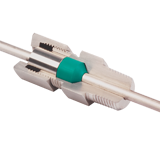
Related Products
Standard Plug - Three Pin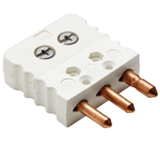
Related Products
Standard Socket - Three Pin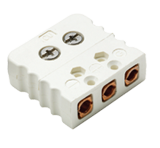
Related Products
Miniature Plug - Three Pin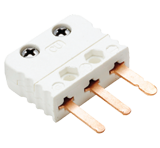
Related Products
Miniature Socket - Three Pin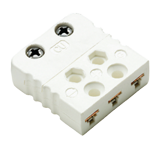
The harsh conditions found in the autoclave chambers of sterilisers require a reliable RTD Pt100, as all too often sensors can fail and instrumentation be damaged through ingress of moisture. These autoclave load sensors offer a reliable solution to the problem.
Available in tolerance classes B or A, they can be supplied as simplex or duplex assemblies in a 3-wire configuration and comprise of a stainless steel sensor tip, a length of cable inside a flexible stainless steel conduit, a stainless steel feed-through and then flying leads oversheathed with silicone rubber.
Available in tolerance classes B or A, they can be supplied as simplex or duplex assemblies in a 3-wire configuration and comprise of a stainless steel sensor tip, a length of cable inside a flexible stainless steel conduit, a stainless steel feed-through and then flying leads oversheathed with silicone rubber.
Frequently Asked Questions
- What is an RTD Pt100 sensor, and how does it work?
An RTD (Resistance Temperature Detector) Pt100 sensor measures temperature by detecting changes in electrical resistance. The "Pt" stands for platinum, the material used in the sensing element, and "100" refers to the resistance value of 100 ohms at 0°C. As the temperature changes, the resistance of the platinum element varies, allowing for accurate temperature measurements. - How accurate are RTD Pt100 sensors?
RTD Pt100 sensors offer high accuracy and stability, with industrial-grade elements ranging from Class B (±0.3ºC at 0ºC) to Class A (±0.15ºC at 0ºC). Higher precision options, such as 1/10 class elements, provide an accuracy of ±0.03ºC at 0ºC. These sensors are widely used in industrial, laboratory, and scientific applications requiring high precision. Additionally, we offer calibration services in our UKAS accredited laboratory. - What is the temperature range for RTD Pt100 sensors?
The temperature range of an RTD sensor depends on factors such as the construction, sheath material and insulation used in the construction. While some platinum elements can withstand temperatures up to 850°C, the overall sensor design will limit the maximum temperature rating. Please check the product specifications for the exact temperature range based on the sensor’s construction. If you need any advice, our engineers are happy to assist!

 France
France Germany
Germany Spain
Spain Netherlands
Netherlands Italy
Italy Hungary
Hungary United States
United States Australia
Australia